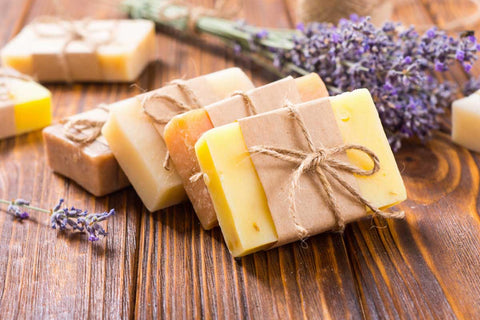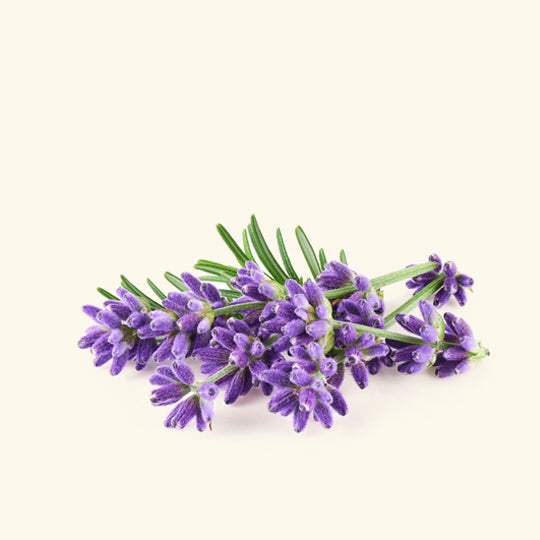Lard Soap Recipe - Simple Steps to Make at Home
The "waste not, want not" philosophy is best shown by the use of lard in soap production. Lard is a soap-making ingredient made from swine fat that produces a stable, creamy lather and a white, firm bar of soap.
Lard is obviously not a food that appeals to everyone, notably vegetarians, vegans, or others who are morally opposed to consuming animal products. Or perhaps you find it repulsive to even consider using handmade Lard Soap Recipe that contains pig fat.

We hear you!
If you can get beyond the "ickiness" element, though, you'll discover that lard is a cheap soap-making fat that yields white soap bars that are durable and firm. Continue reading to find out more about soap recipe with lard, the advantages of lard soap, how to render lard, and how to make a basic pure lard soap recipe.
How Is Lard Made?
The animal fat from pig is called lard. By melting the fat over low heat for several hours, until the "crackle" rises to the top and the liquid fat on the bottom is clear, it is rendered or melted from the fatty tissues.
Lard has been used for millennia largely as a frying fat, but it may also be found in soaps, lotions, salves, poultices, and other health and cosmetic items.
Why use lard for producing soap? It produces a lovely soap bar that is moisturising for the skin and abundant in vitamin A, vitamin E, and omega-3 fatty acids. Read More to know more about of Lard Soap Recipe.
Benefits Of Lard Soap For Skin
Lard soap, also known as tallow soap, is a type of soap made from animal fats, typically pig fat. While it may not sound like the most glamorous ingredient, lard soap actually has several benefits for the skin.
Firstly, lard is a rich source of vitamin D, which is essential for healthy skin. Vitamin D can help improve skin elasticity and hydration, as well as reduce inflammation.
Secondly, Lard Soap Recipe is very gentle and moisturizing. It creates a creamy lather that helps to soften and soothe dry, itchy skin. Lard soap is also less likely to strip the skin of its natural oils than other types of soap, making it a great choice for those with sensitive or dry skin.
Finally, soap recipe with lard is also high in oleic acid, a type of fatty acid that is known for its moisturizing properties. Oleic acid helps to penetrate the skin and lock in moisture, leaving the skin feeling soft and supple.
Overall, lard soap can be a great choice for anyone looking for a gentle, moisturizing soap that is kind to their skin.
Homemade Lard Soap Recipe

- Lard - 1000 Grams
- Soapmaking Lye - 133 Grams
- Distilled Water - 266 Grams
- Essential Oil or Fragrance Oil (your choice) - 30 Grams
Steps to Make
Step 1: Make sure the space where you are producing the soap is well aired. Put on your mask, apron, long rubber gloves, eye protection, and gloves. We think it's important to get everything ready and weighed before you start. Put the water's weight in a glass jug. Weigh the crystals of sodium hydroxide/lye in a different container.
Step 2: When ready, slowly mix them by adding your lye crystals into the water while stirring (not the other way around). This will cause a chemical reaction, causing the lye water to start heating up and releasing harmful odours.
Step 3: Make sure the space where you are producing the soap is well aired. Put on your mask, apron, long rubber gloves, eye protection, and gloves. We think it's important to get everything ready and weighed before you start. Put the water's weight in a glass jug. Weigh the crystals of sodium hydroxide/lye in a different container.

Step 4: When ready, slowly mix them by adding your lye crystals into the water while stirring (not the other way around). This will cause a chemical reaction, causing the lye water to start heating up and releasing harmful odours. Pour the lye/water combination into the oils in a thin stream once the lye and oils have cooled to between 120° F (54C) and 90° F (32C) in temperature.
Step 5: Blend the ingredients in short bursts using an electric stick blender. Blend the batter continuously until it reaches the consistency where dripping soap from a spoon or blender leaves a trace line on the batter's surface. (often known as the "trace stage")Stir thoroughly after adding any desired colours and essential/fragrance oils.
Step 6: Fill the mould with your soap. Wrap it in a towel, cover the top with a lid or card, and let it sit for 24 hours somewhere warm. The soap should be sufficiently solid after 24 hours to be removed from the soap mould. Using a special kitchen knife or soap cutter, the soap should still be malleable enough to be divided into bars. After cutting the soap into bars, you must allow it to cure for about a month, stirring the soap occasionally, before it is ready for use.
Conclusion
In conclusion, Lard Soap Recipe at offers a range of benefits for the skin. It contains vitamin D, which can improve skin health, and is gentle and moisturizing, making it ideal for those with dry or sensitive skin. Additionally, the high oleic acid content of lard soap helps to lock in moisture and leave the skin feeling soft and supple. While some may be hesitant to use a soap made from animal fats, lard soap can be a natural and effective option for promoting healthy, nourished skin.
Frequently Asked Questions
Q: Can you use lard in cold process soap?
A. To provide soap strength and maintain a consistent lather, lard and tallow are used. These qualities make tallow and lard popular alternatives to palm oil. You may make your own lard and tallow at home or buy them at the supermarket. It's a terrific method to reduce, reuse, and recycle to make your own tallow.
Q: Can you make soap with just lard?
A. Many people adore using lard to make soap because it gives the end product a creamy lather, conditioning qualities, and some firmness. Although it does provide your soap useful benefits, you should be mindful that it does not do much for the appeal of your label.
You May Also Like
Buy Products
-
 Aloe Vera Soap Base
Aloe Vera Soap Base -
 Castile Soap Base
Castile Soap Base -
 Lavender Essential Oil
Lavender Essential Oil -
 Lavender Fragrance Oil
Lavender Fragrance Oil -
 Caustic Soda / Sodium Hydroxide
Caustic Soda / Sodium Hydroxide
Related Articles
Disclaimer :- This article is intended for informational and educational purposes only and should not be considered a substitute for professional medical advice. For specific health concerns or treatment, please consult your personal physician. The article's editor, writer, and VedaOils organization do not assume any responsibility for any health outcomes resulting from the information provided. Readers are strongly encouraged to seek advice from their physician before acting on any recommendations made in these articles.

















 Sign in
Sign in Register now
Register now My Reward Points
My Reward Points









